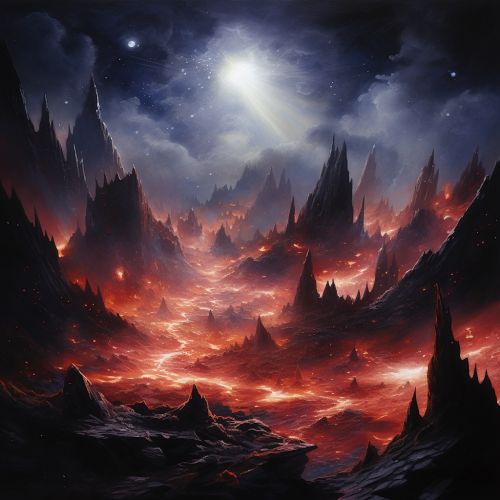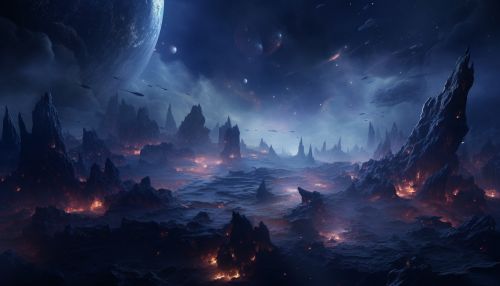Star Formation
Overview
Star formation is the process by which dense regions within molecular clouds in interstellar space, sometimes referred to as "stellar nurseries" or "star-forming regions", collapse and form stars. As a branch of astronomy, star formation includes the study of the interstellar medium (ISM) and giant molecular clouds (GMC) as precursors to the star formation process, and the study of protostars and young stellar objects as its immediate products.


Molecular Clouds
Molecular clouds, also known as stellar nurseries, are the birthplaces of stars. These clouds are composed of hydrogen molecules, along with traces of other elements. The clouds are cold, with temperatures typically around 10 to 20 Kelvin, and are dense, with a typical density of a few hundred to a few thousand molecules per cubic centimeter. The clouds are also turbulent, with supersonic internal motions that create shock waves and compress the gas into dense filaments and cores, where star formation can occur.
Star Formation Process
The process of star formation begins when a dense region of a molecular cloud begins to collapse under its own gravity. This collapse may be triggered by a variety of mechanisms, such as the shock wave from a nearby supernova, the passage of the cloud through a spiral arm of the galaxy, or gravitational interactions with nearby clouds or galaxies.
As the cloud collapses, it breaks up into smaller and smaller pieces, each of which begins to collapse on its own. These collapsing pieces are known as protostars. A protostar is a dense core of gas and dust that is in the process of becoming a star, but has not yet started nuclear fusion in its core.
As the protostar continues to collapse, its temperature and pressure increase. When the temperature and pressure in the core of the protostar become high enough, nuclear fusion begins, and the protostar becomes a main sequence star.
Main Sequence Stars
Main sequence stars are stars that are in the stable phase of their life, during which they are burning hydrogen in their cores. This phase of a star's life can last from a few million to several billion years, depending on the mass of the star. The more massive a star is, the shorter its life on the main sequence, because it burns its fuel more quickly.
Stellar Evolution
After a star has exhausted the hydrogen fuel in its core, it leaves the main sequence and enters the next phase of its life, known as stellar evolution. The exact sequence of events during this phase depends on the mass of the star.
Low-mass stars, like our Sun, become red giants, then shed their outer layers to become white dwarfs. High-mass stars become supergiants, then explode as supernovae, leaving behind a neutron star or black hole.
Star Formation Rates
Star formation rates in galaxies can be measured by observing the ultraviolet light from young stars, the infrared light from dust heated by young stars, or the radio emission from hydrogen gas ionized by young stars. These measurements show that star formation rates vary widely from galaxy to galaxy, and within different regions of the same galaxy.
